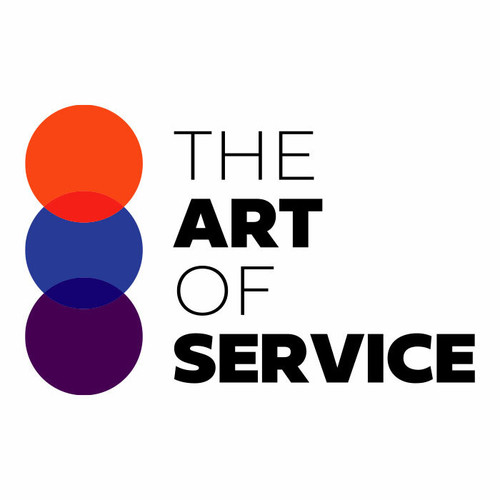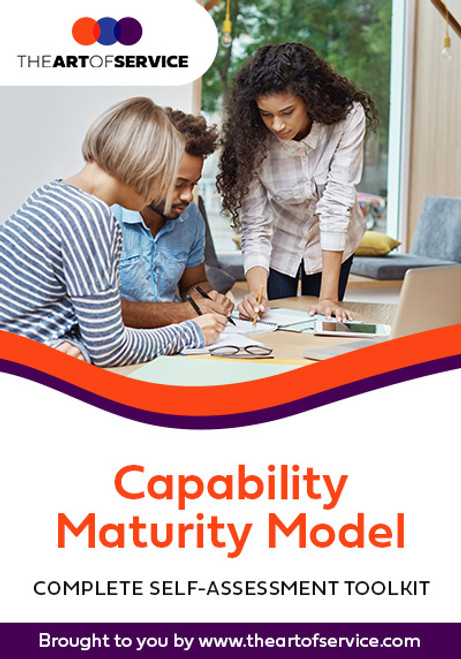Save time, empower your teams and effectively upgrade your processes with access to this practical IT Operating Model Toolkit and guide. Address common challenges with best-practice templates, step-by-step work plans and maturity diagnostics for any IT Operating Model related project.
Download the Toolkit and in Three Steps you will be guided from idea to implementation results.
The Toolkit contains the following practical and powerful enablers with new and updated IT Operating Model specific requirements:
STEP 1: Get your bearings
Start with...
- The latest quick edition of the IT Operating Model Self Assessment book in PDF containing 49 requirements to perform a quickscan, get an overview and share with stakeholders.
Organized in a data driven improvement cycle RDMAICS (Recognize, Define, Measure, Analyze, Improve, Control and Sustain), check the…
- Example pre-filled Self-Assessment Excel Dashboard to get familiar with results generation
Then find your goals...
STEP 2: Set concrete goals, tasks, dates and numbers you can track
Featuring 989 new and updated case-based questions, organized into seven core areas of process design, this Self-Assessment will help you identify areas in which IT Operating Model improvements can be made.
Examples of the 989 standard requirements:
- What is it that newly appointed heads do, how does that differ from what business managers do and can an alternative model of excellence be constructed that reflects, rather than restrains, your perception of effective practice?
- How will you describe the technology, secret sauce, or magic behind your product or service. The less text and the more diagrams, schematics and flowcharts the better. What do you have that makes your better?
- When deciding to outsource you know if the candidate services require extensive interactions between the service providers and the businesss competitive and strategic resources and capabilities?
- Is the committee satisfied that the planned target operating model has the potential to achieve its objective to improve consistency of housing service delivery across your organization?
- Do you have in place the expertise, dedicated resources and separate funding to evaluate disruptive technologies and impact on your industry; business model(s), products and services?
- From the it angle: what do you have to put in place in terms of an operating model and functionality to evolve and support an enterprise deployment of robotic process automation?
- Does your enterprise have a clear vision of a new business model, the enabling capabilities, the priorities and economics, and is it executing toward the already stated changes?
- Making the right technology choice for a new technology project can be a daunting task. Concerning the roll-out itself, which technology or network topology should be used?
- How can you create a secure environment to protect your data, especially when new business models like cloud computing and mobility leave you with little control over it?
Complete the self assessment, on your own or with a team in a workshop setting. Use the workbook together with the self assessment requirements spreadsheet:
- The workbook is the latest in-depth complete edition of the IT Operating Model book in PDF containing 989 requirements, which criteria correspond to the criteria in...
Your IT Operating Model self-assessment dashboard which gives you your dynamically prioritized projects-ready tool and shows your organization exactly what to do next:
- The Self-Assessment Excel Dashboard; with the IT Operating Model Self-Assessment and Scorecard you will develop a clear picture of which IT Operating Model areas need attention, which requirements you should focus on and who will be responsible for them:
- Shows your organization instant insight in areas for improvement: Auto generates reports, radar chart for maturity assessment, insights per process and participant and bespoke, ready to use, RACI Matrix
- Gives you a professional Dashboard to guide and perform a thorough IT Operating Model Self-Assessment
- Is secure: Ensures offline data protection of your Self-Assessment results
- Dynamically prioritized projects-ready RACI Matrix shows your organization exactly what to do next:
STEP 3: Implement, Track, follow up and revise strategy
The outcomes of STEP 2, the self assessment, are the inputs for STEP 3; Start and manage IT Operating Model projects with the 62 implementation resources:
- 62 step-by-step IT Operating Model Project Management Form Templates covering over 1500 IT Operating Model project requirements and success criteria:
Examples; 10 of the check box criteria:
- Responsibility Assignment Matrix: The staff characteristics – is the group or the person capable to work together as a team?
- Probability and Impact Assessment: What kind of preparation would be required to do this?
- Change Management Plan: Is there support for this application(s) and are the details available for distribution?
- Roles and Responsibilities: Concern: where are you limited or have no authority, where you can not influence?
- Scope Management Plan: Does all IT Operating Model project documentation reside in a common repository for easy access?
- Stakeholder Management Plan: Does the business case include how the IT Operating Model project aligns with your organizations strategic goals & objectives?
- Cost Baseline: Should a more thorough impact analysis be conducted?
- Activity Duration Estimates: Account for the four frames of organizations. How can they help IT Operating Model project managers understand your organizational context for IT Operating Model projects?
- Probability and Impact Assessment: What is the level of experience available with your organization?
- Monitoring and Controlling Process Group: Were sponsors and decision makers available when needed outside regularly scheduled meetings?
Step-by-step and complete IT Operating Model Project Management Forms and Templates including check box criteria and templates.
1.0 Initiating Process Group:
- 1.1 IT Operating Model project Charter
- 1.2 Stakeholder Register
- 1.3 Stakeholder Analysis Matrix
2.0 Planning Process Group:
- 2.1 IT Operating Model project Management Plan
- 2.2 Scope Management Plan
- 2.3 Requirements Management Plan
- 2.4 Requirements Documentation
- 2.5 Requirements Traceability Matrix
- 2.6 IT Operating Model project Scope Statement
- 2.7 Assumption and Constraint Log
- 2.8 Work Breakdown Structure
- 2.9 WBS Dictionary
- 2.10 Schedule Management Plan
- 2.11 Activity List
- 2.12 Activity Attributes
- 2.13 Milestone List
- 2.14 Network Diagram
- 2.15 Activity Resource Requirements
- 2.16 Resource Breakdown Structure
- 2.17 Activity Duration Estimates
- 2.18 Duration Estimating Worksheet
- 2.19 IT Operating Model project Schedule
- 2.20 Cost Management Plan
- 2.21 Activity Cost Estimates
- 2.22 Cost Estimating Worksheet
- 2.23 Cost Baseline
- 2.24 Quality Management Plan
- 2.25 Quality Metrics
- 2.26 Process Improvement Plan
- 2.27 Responsibility Assignment Matrix
- 2.28 Roles and Responsibilities
- 2.29 Human Resource Management Plan
- 2.30 Communications Management Plan
- 2.31 Risk Management Plan
- 2.32 Risk Register
- 2.33 Probability and Impact Assessment
- 2.34 Probability and Impact Matrix
- 2.35 Risk Data Sheet
- 2.36 Procurement Management Plan
- 2.37 Source Selection Criteria
- 2.38 Stakeholder Management Plan
- 2.39 Change Management Plan
3.0 Executing Process Group:
- 3.1 Team Member Status Report
- 3.2 Change Request
- 3.3 Change Log
- 3.4 Decision Log
- 3.5 Quality Audit
- 3.6 Team Directory
- 3.7 Team Operating Agreement
- 3.8 Team Performance Assessment
- 3.9 Team Member Performance Assessment
- 3.10 Issue Log
4.0 Monitoring and Controlling Process Group:
- 4.1 IT Operating Model project Performance Report
- 4.2 Variance Analysis
- 4.3 Earned Value Status
- 4.4 Risk Audit
- 4.5 Contractor Status Report
- 4.6 Formal Acceptance
5.0 Closing Process Group:
- 5.1 Procurement Audit
- 5.2 Contract Close-Out
- 5.3 IT Operating Model project or Phase Close-Out
- 5.4 Lessons Learned
Results
With this Three Step process you will have all the tools you need for any IT Operating Model project with this in-depth IT Operating Model Toolkit.
In using the Toolkit you will be better able to:
- Diagnose IT Operating Model projects, initiatives, organizations, businesses and processes using accepted diagnostic standards and practices
- Implement evidence-based best practice strategies aligned with overall goals
- Integrate recent advances in IT Operating Model and put process design strategies into practice according to best practice guidelines
Defining, designing, creating, and implementing a process to solve a business challenge or meet a business objective is the most valuable role; In EVERY company, organization and department.
Unless you are talking a one-time, single-use project within a business, there should be a process. Whether that process is managed and implemented by humans, AI, or a combination of the two, it needs to be designed by someone with a complex enough perspective to ask the right questions. Someone capable of asking the right questions and step back and say, 'What are we really trying to accomplish here? And is there a different way to look at it?'
This Toolkit empowers people to do just that - whether their title is entrepreneur, manager, consultant, (Vice-)President, CxO etc... - they are the people who rule the future. They are the person who asks the right questions to make IT Operating Model investments work better.
This IT Operating Model All-Inclusive Toolkit enables You to be that person.
Includes lifetime updates
Every self assessment comes with Lifetime Updates and Lifetime Free Updated Books. Lifetime Updates is an industry-first feature which allows you to receive verified self assessment updates, ensuring you always have the most accurate information at your fingertips.








